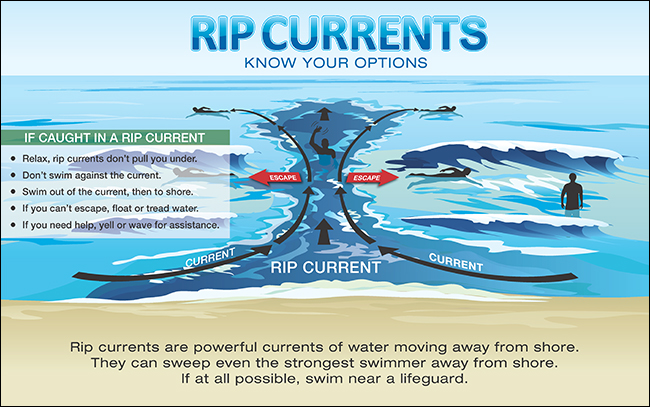Summer is a perfect time to enjoy the warm sun, golden sand, and refreshing water. During the warm season, millions of people venture to the beach to unwind and relax. At the same time, unfortunately, every summer we hear news about accidents on water that sometimes sadly lead to loss of lives. Even more unfortunate is the fact that most of these accidents are preventable, and more education is needed in order to bring awareness of the potential dangers and best practices of their mitigation and response.
In particular, I was always puzzled by the number of people who have no idea what a rip current is. According to the statistics, lifeguards are involved in some 30000 water rescues related to rip currents every year in the US, and about 100 people on average die in rip currents every year. In Australia, for example, rips currents kill more people than all natural disasters and sharks, combined. To this date in 2019, there is already 29 rip current fatalities recorded in the US. It is important to understand that by simply knowing what the rip is, and how to behave if caught in it, one can significantly improve the chances to survive.

As the waves rush towards the shore, rip current are present at the beaches every day. However, most of them are too weak and too slow to be dangerous. It is under certain conditions like tide, waves, shape of the shore line, etc, that the rip current can reach dangerous speed. There are several well-known tips that help to survive in a rip current, that can be found elsewhere: stay calm, don’t panic, keep yourself afloat, yell and wave for help, and swim parallel to the shore. In any case do not exhaust yourself fighting the current, as most probably you will not win.
So what can we do to empower people to be more successful in following these simple, yet life-saving tips? First and foremost – make sure that they know them! It takes significant time and effort to improve one’s swimming skills – however, one does not need to be a great swimmer to survive the rip. Ability to recognize the danger, even post factum, is crucial in order to stay calm, save energy and call for help. It does not take too much time to learn rip current safety, and I strongly believe that it should be taught universally as part of the school curriculum, every spring, along with other basics of weather and outdoors safety.
You can always find a wealth of useful information about rip currents on a dedicated site from the National Weather Service – thus, please take some time to learn how to recognize the rip and what to do if you are caught. After that, find a moment to talk about it with your family and friends – and stay safe enjoying the beach!